To find the best SUV for snow, it’s important to consider key features such as drivetrain, safety technologies, and comfort/convenience features. The right combination of these elements can make even an inexperienced snow driver safer and more competent. All-wheel drive (AWD) and four-wheel drive (4WD) are popular options for driving in snow. AWD operates with little driver input and can adjust torque as needed, while 4WD creates a lock between the front and rear axles for increased traction. The Subaru Outback is our top overall pick for the best SUV for snow.
Key Takeaways:
- Consider key features like drivetrain, safety technologies, and comfort/convenience features when choosing an SUV for snow driving.
- All-wheel drive (AWD) and four-wheel drive (4WD) are popular drivetrain options for snow driving.
- AWD adjusts torque automatically, while 4WD creates a lock between the front and rear axles for increased traction.
- The Subaru Outback is our top pick for the best SUV for snow in the US.
What Makes the Best Cars for Snow?
When it comes to finding the best cars for snow, certain features can significantly enhance their performance in winter conditions. These features include:
- Drivetrain: All-wheel drive (AWD) or four-wheel drive (4WD) systems offer better traction and control on snowy or icy roads.
- Safety Technologies: Features such as blind-spot monitoring, traction control, and stability control contribute to improved safety and driver confidence.
- Comfort Features: Heated seats and advanced climate control systems enhance comfort during cold winter drives.
By combining these elements, the best cars for snow can provide a safer and more competent driving experience, especially for those who are inexperienced in snowy conditions. These features work together to enhance traction, control, and overall driver confidence on icy or snowy roads.
“The right combination of features in a car can make all the difference when it comes to driving in the snow. AWD or 4WD drivetrains, safety technologies, and comfort features work together to provide better traction, control, and overall driver confidence on snowy or icy roads.
– Car Expert Magazine
Comparing AWD and 4WD
Two popular options for snow driving are all-wheel drive (AWD) and four-wheel drive (4WD). While both systems provide increased traction and stability, they operate differently:
| AWD | 4WD |
|---|---|
| Operates with little driver input and adjusts torque as needed. | Creates a lock between the front and rear axles for equal torque distribution. |
| Seamlessly adjusts to changing road conditions. | Recommended for off-road or extreme driving conditions. |
| Minimal impact on fuel economy. | May have a slightly higher impact on fuel economy. |
While both AWD and 4WD can be effective in snow, AWD is often the recommended choice for most drivers due to its seamless adjustment to changing road conditions and minimal impact on fuel economy.
AWD vs. 4WD: Which Is Better for Snow?
When it comes to driving in the snow, one of the key considerations is choosing between all-wheel drive (AWD) and four-wheel drive (4WD) systems. Both options provide increased traction and stability in snowy conditions, but there are some important differences to consider.
AWD systems are typically always engaged and can automatically adjust torque to the wheels with the most grip. This seamless adjustment to changing road conditions makes AWD a popular choice for most drivers. Additionally, AWD systems have a minimal impact on fuel economy, making them a practical option for everyday use.
On the other hand, 4WD systems create a lock between the front and rear axles, ensuring equal torque distribution to all four wheels. This can be beneficial in extremely slippery conditions or off-road situations. However, 4WD systems may require manual engagement and driver input, which can be less convenient for daily driving.
| AWD | 4WD |
|---|---|
| Engagement | Always engaged |
| Torque Adjustment | Automatic, based on grip |
| Fuel Economy | Minimal impact |
| Convenience | Seamless adjustment to changing road conditions |
| Engagement | Manual engagement may be required |
| Torque Distribution | Equal distribution to all four wheels |
| Usefulness | Beneficial for extreme slippery or off-road conditions |
“When it comes to choosing between AWD and 4WD for snow driving, it ultimately depends on your specific needs and preferences. If you’re looking for a system that seamlessly adjusts to changing road conditions and offers good fuel economy, AWD may be the better choice. On the other hand, if you require maximum traction in extreme conditions or off-road capability, 4WD might be the way to go. Consider your driving environment and the type of snow conditions you frequently encounter to make an informed decision.”
In summary, both AWD and 4WD can be effective for driving in the snow, but they have distinct characteristics. AWD systems excel in everyday driving situations by automatically adjusting torque distribution without requiring driver input. On the other hand, 4WD offers maximum traction in extreme conditions or off-road scenarios but may require manual engagement and have a greater impact on fuel economy. Understanding the differences between these systems will help you make the right choice for your snow-driving needs.
Top Safety Features for Driving in Snow
When it comes to driving in snowy conditions, having the right safety features is crucial for maintaining control and ensuring a safe journey. Here are some of the top safety features that can enhance your snow driving experience:
- Adaptive Headlights: These headlights adjust their beam patterns as you turn, providing better visibility in low-light conditions and around corners.
- Anti-lock Brakes (ABS): ABS prevents your wheels from locking up during hard braking, allowing you to maintain steering control and avoid skidding on icy roads.
- Stability Control: This feature helps to maintain vehicle stability by automatically applying brakes and reducing engine power when the vehicle detects a loss of control.
- Automatic High Beams: Automatic high beams adjust the intensity of your headlights based on the surrounding light conditions. They can improve visibility during heavy snowfall or when driving at night.
- Forward Collision Warning with Emergency Braking: This safety feature uses sensors to detect potential collisions and alerts you with visual and audible warnings. In some cases, it can even apply the brakes automatically to prevent or mitigate a collision.
These safety features work together to improve traction, visibility, and the ability to respond to potential hazards on snowy or icy roads. When combined with other snow-driving essentials like winter tires and appropriate driving techniques, they can help you navigate through challenging winter conditions with confidence.
Winter Tires: A Must-Have for Snow Driving
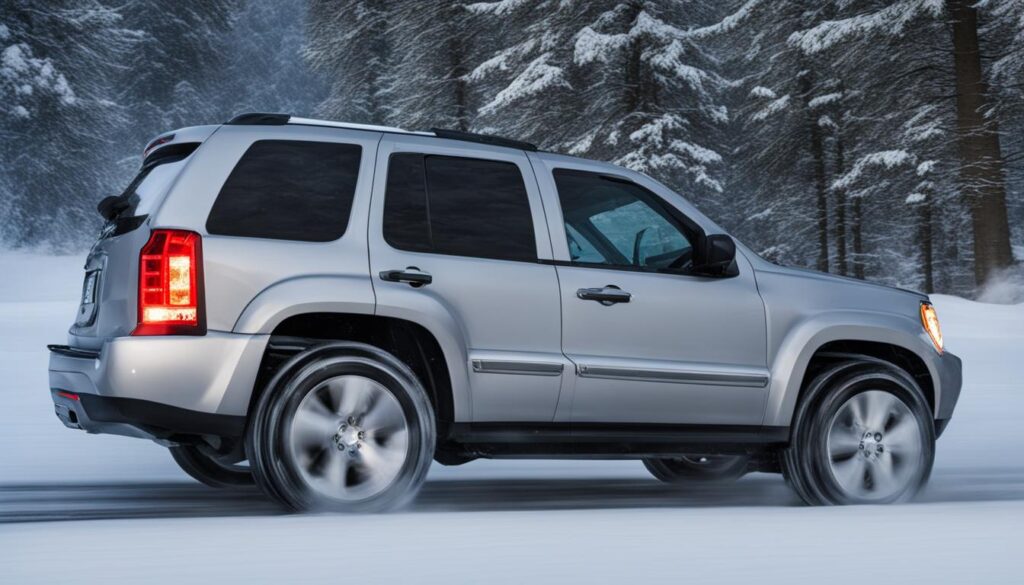
One of the most important safety features for snow driving is winter tires. These specialized tires are designed to provide better grip and control in cold temperatures, slush, and snow. The unique rubber compounds and tread patterns of winter tires help to channel snow and water away from the tire’s surface, reducing the risk of hydroplaning and improving traction.
Winter tires have deeper tread grooves and added biting edges, allowing them to grip the road better in snowy or icy conditions. They also remain flexible in freezing temperatures, ensuring optimal tire performance. It’s essential to fit all four tires with winter tires to maintain balanced handling and traction on all wheels.
When considering safety features for driving in snow, don’t forget the importance of winter tires. They are a crucial component of your vehicle’s overall safety system during the winter months.
Stay Safe on Snowy Roads
Remember, safety should always be a top priority when driving in snowy or icy conditions. Along with the safety features mentioned above, it’s important to practice safe driving techniques, such as reducing your speed, increasing your following distance, and avoiding sudden maneuvers. By being prepared and taking necessary precautions, you can navigate through winter weather with confidence and arrive at your destination safely.
Importance of Ground Clearance and Winter Tires
When it comes to driving in snowy conditions, two essential factors that can significantly impact your vehicle’s performance are ground clearance and winter tires. These elements play a crucial role in ensuring traction, stability, and overall safety on slippery roads.
The Role of Ground Clearance
Ground clearance refers to the distance between the lowest point of your vehicle and the ground. In snowy or icy conditions, having sufficient ground clearance can prevent your vehicle from getting stuck or scraping against uneven terrain. SUVs, with their higher ground clearance compared to sedans or hatchbacks, are generally better suited for navigating through snowy roads. The increased clearance allows for smoother travel over snow banks and reduces the risk of damaging your vehicle’s undercarriage.
The Benefits of Winter Tires
Winter tires are specifically designed to provide superior grip and traction in cold temperatures, slush, and snow. These tires have unique rubber compounds and tread patterns that enhance their performance on icy or slippery surfaces. When paired with an SUV’s all-wheel drive or four-wheel drive system, winter tires can further enhance your vehicle’s ability to handle snowy conditions. It’s important to note that using winter tires is recommended even if your vehicle has all-wheel drive, as the tires play a significant role in maintaining traction and control.
Comparing Ground Clearance and Winter Tire Options for Popular SUVs
Here is a comparison table showcasing the ground clearance and recommended winter tire options for some popular SUV models:
| Model | Ground Clearance (inches) | Recommended Winter Tires |
|---|---|---|
| Jeep Wrangler | 10.8 | Goodyear Wrangler DuraTrac |
| Subaru Outback | 8.7 | Michelin X-Ice Xi3 |
| Honda CR-V | 7.8 | Bridgestone Blizzak WS90 |
| Toyota RAV4 | 8.4 | Continental VikingContact 7 |
Remember, when choosing an SUV for snow driving, consider both the ground clearance and the option to equip it with winter tires. These two factors working in tandem can greatly improve your vehicle’s performance and your overall driving experience in snowy conditions.
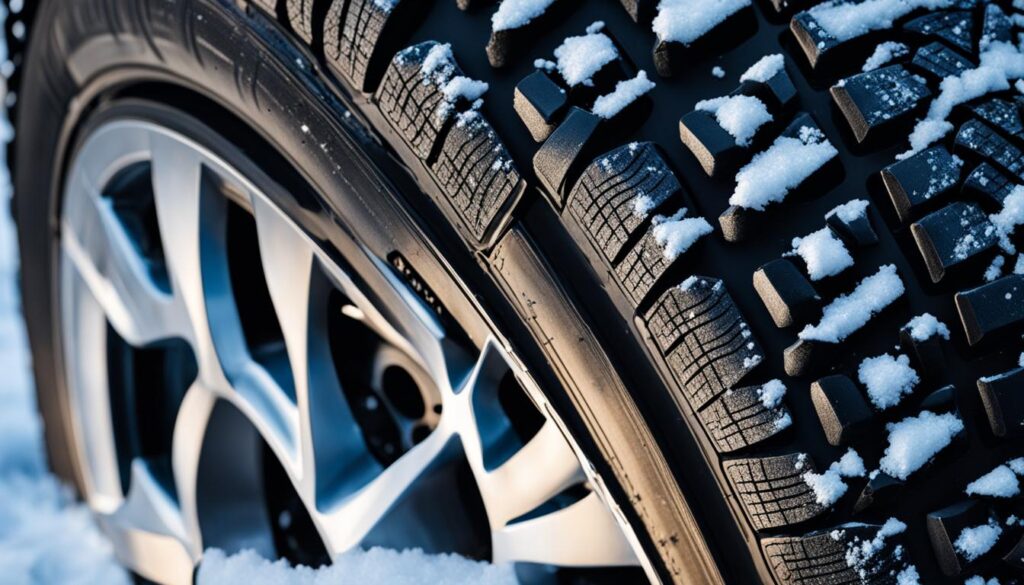
Best Small SUVs for Snow
When it comes to navigating snowy terrain, small SUVs are a fantastic choice. With their compact size, higher ground clearance, and excellent traction capabilities, these vehicles offer the perfect combination of versatility and efficiency. We have compiled a list of the best small SUVs for snow, taking into consideration factors such as safety features, all-wheel drive capabilities, and overall performance.
1. Jeep Wrangler
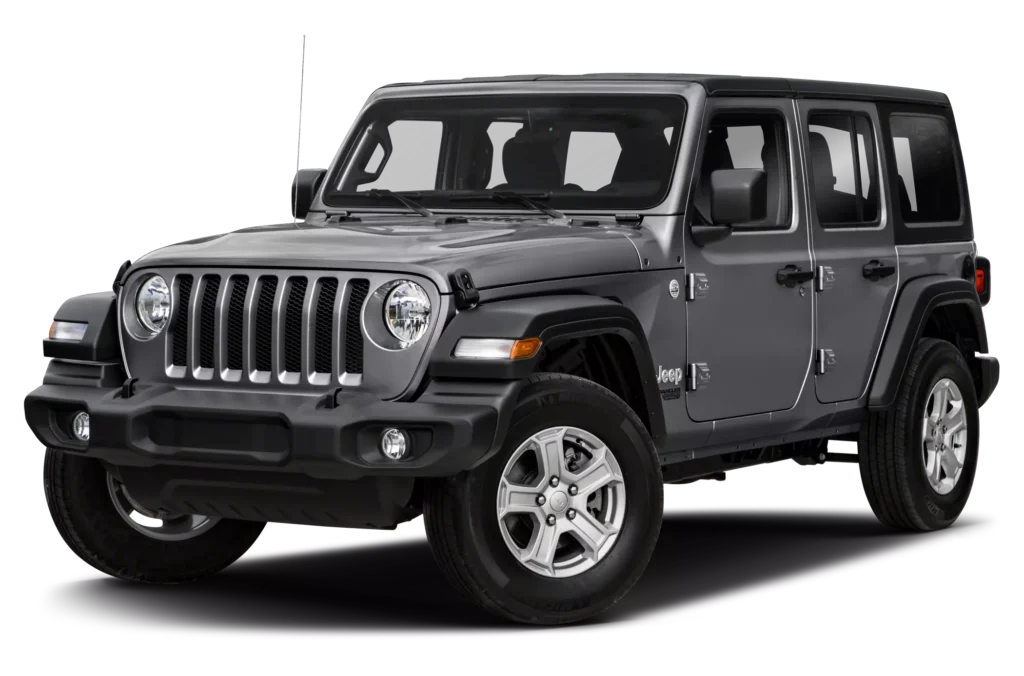
The Jeep Wrangler is a legendary SUV known for its exceptional off-road capabilities. With its rugged design, four-wheel drive system, and specialized snow tires, the Wrangler provides excellent traction and stability on icy and snowy roads. It also comes equipped with advanced safety features such as blind-spot monitoring and electronic stability control, ensuring a safe and secure driving experience in winter conditions.
2. Subaru Outback
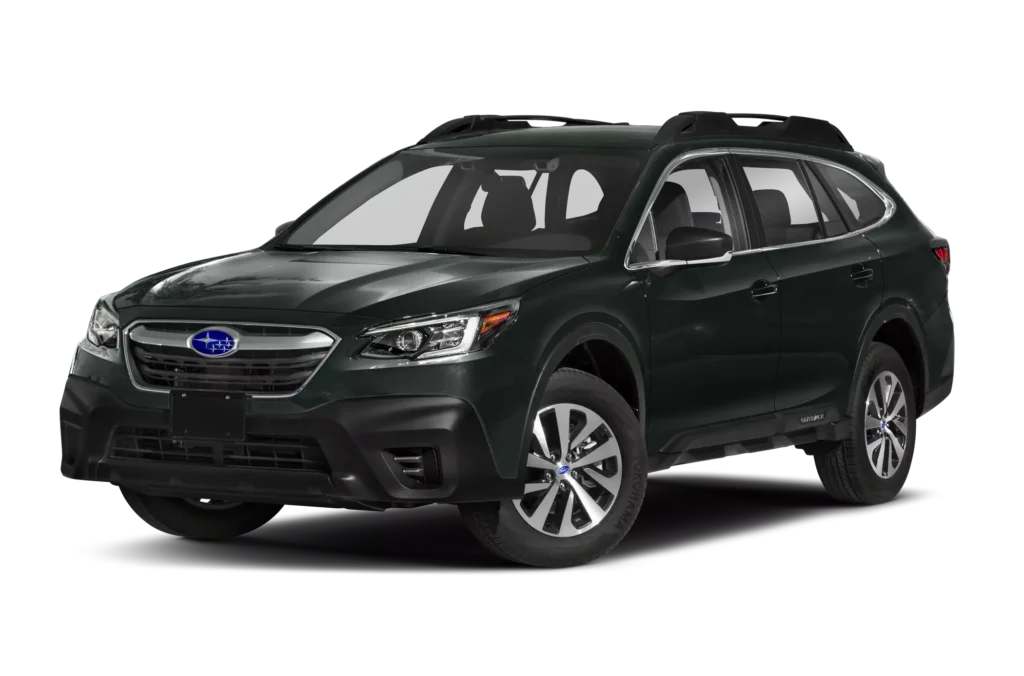
The Subaru Outback is a popular choice among snow drivers for its exceptional all-wheel-drive system and reliable performance. Its symmetrical all-wheel drive provides better grip on slippery surfaces, while features like heated seats and advanced driver-assist technologies enhance comfort and safety. With its spacious interior and ample cargo space, the Outback combines practicality with winter-ready capabilities.
3. Subaru Forester
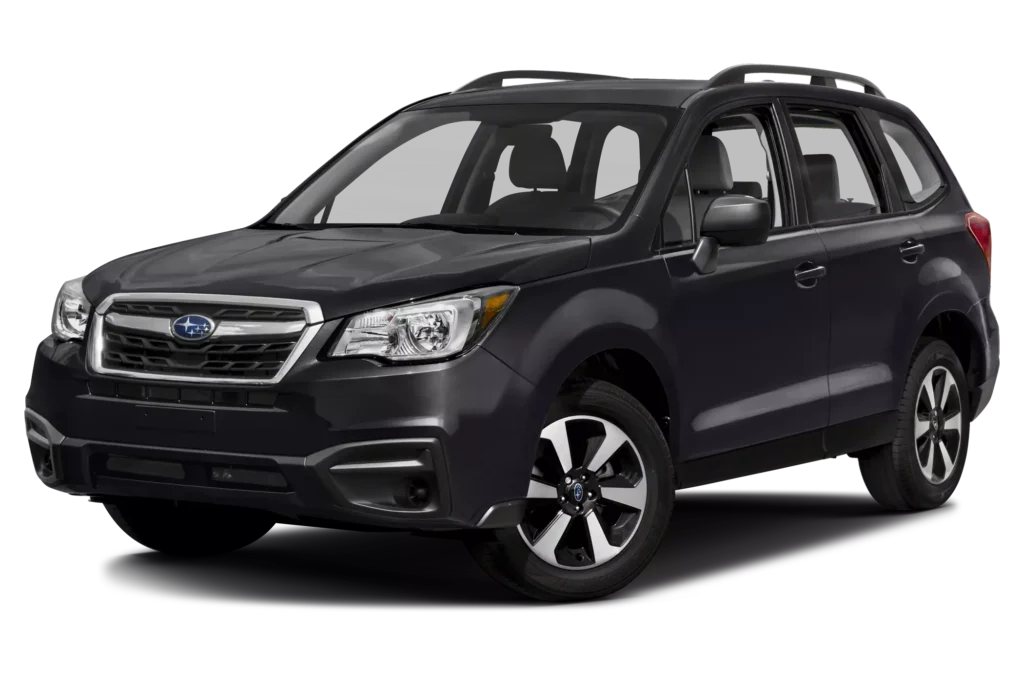
Another top contender in the small SUV category is the Subaru Forester. Known for its outstanding reliability and capable all-wheel drive system, the Forester offers excellent traction and stability on snow-covered roads. Its generous ground clearance and sturdy construction make it a reliable companion in harsh winter conditions. Additionally, the Forester comes equipped with a range of safety features, including adaptive cruise control and lane departure warning.
4. Honda CR-V
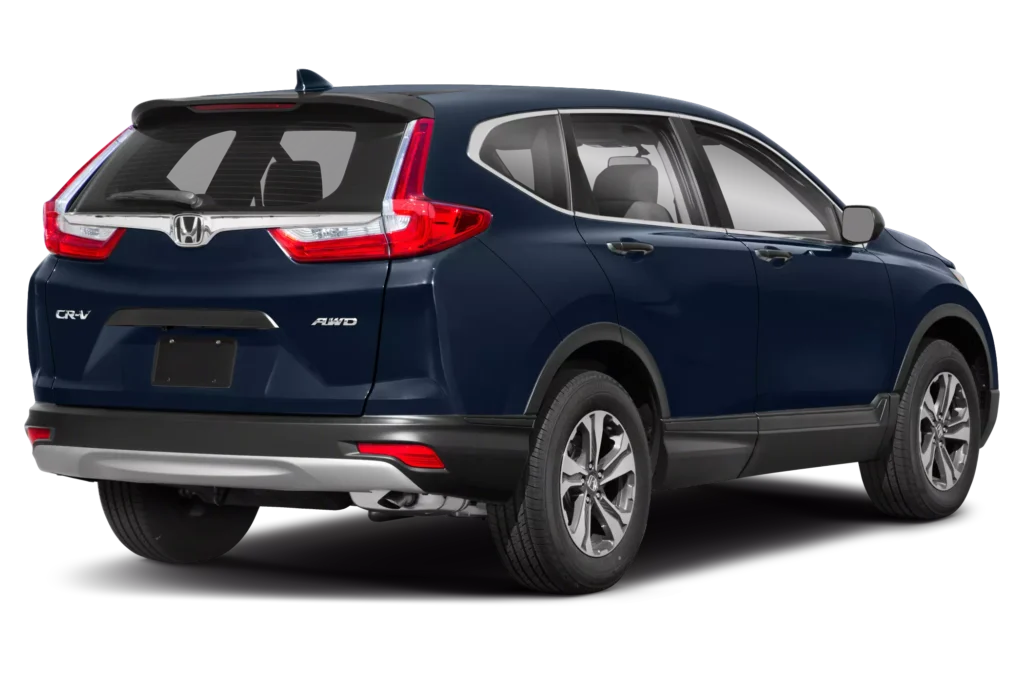
The Honda CR-V is a compact SUV that excels in snowy conditions. Available with all-wheel drive, the CR-V offers enhanced traction and stability, making it a great choice for winter driving. With its spacious interior and convenient features like heated seats and a power liftgate, the CR-V provides both comfort and versatility. Additionally, its advanced safety technologies, such as collision mitigation braking and road departure mitigation, offer added peace of mind on snowy roads.
These small SUVs have proven their mettle in snowy conditions, combining performance, safety, and reliability. When choosing the best small SUV for snow, it’s essential to consider factors such as drivetrain capabilities, safety features, and overall winter performance. By selecting one of these top contenders, you can tackle winter roads with confidence and enjoy a safe and comfortable driving experience.
Best SUVs for Snow Across Multiple Categories
When it comes to finding the best SUVs for snow in the US, we have analyzed a range of SUVs across multiple categories to determine the top picks. These SUVs excel in snowy conditions, offering a combination of features, performance, and safety technologies to enhance your winter driving experience.
Compact SUVs
In the compact SUV category, the Subaru Outback stands out as a top choice. With its all-wheel drive system, high ground clearance, and advanced safety features, the Outback provides excellent traction and control on snow-covered roads. Other notable contenders in this category include the Subaru Forester and Honda CR-V.
Midsize and Full-Size SUVs
For those looking for a larger SUV, the Toyota RAV4, Hyundai Tucson, and Kia Sportage are strong options. These SUVs boast all-wheel drive capabilities, reliable performance, and a range of safety features designed to enhance snow-driving performance.
Off-Road SUVs
If you frequently encounter challenging snow conditions off the beaten path, the Jeep Wrangler and Ford Escape are worth considering. These rugged SUVs offer four-wheel drive systems and exceptional off-road capabilities, ensuring you can confidently navigate through even the toughest snow-covered terrains.
Overall, these SUVs have consistently shown their reliability and performance in snowy conditions, making them some of the best SUVs for snow across multiple categories.
| SUV Model | Category |
|---|---|
| Subaru Outback | Compact SUV |
| Subaru Forester | Compact SUV |
| Honda CR-V | Compact SUV |
| Toyota RAV4 | Midsize/Full-Size SUV |
| Hyundai Tucson | Midsize/Full-Size SUV |
| Kia Sportage | Midsize/Full-Size SUV |
| Jeep Wrangler | Off-Road SUV |
| Ford Escape | Off-Road SUV |
Conclusion
As we conclude our guide to finding the best SUV for snow in the US, it’s clear that the right combination of features can make a significant difference in your winter driving experience. By considering key factors such as drivetrain, safety technologies, and comfort/convenience features, you can find a vehicle that provides confidence and control even in the harshest winter conditions.
Both AWD and 4WD are popular options for snow driving, but AWD often comes out on top due to its ability to seamlessly adjust to changing road conditions and its minimal impact on fuel economy. Safety features like adaptive headlights, anti-lock brakes, and stability control enhance traction and improve visibility, while ground clearance and winter tires further enhance performance on snowy or icy roads.
Also Read:
- Exploring the Top SUVs with the Most Legroom in the 3rd Row
- Can You Fit a Dishwasher in Your SUV? A Comprehensive Guide
With our top-rated SUVs for snow, including the Subaru Outback, Jeep Wrangler, and Honda CR-V, you can choose a vehicle that suits your needs and budget. Whether you’re an inexperienced snow driver looking for added safety or an experienced driver seeking greater competence, these SUVs offer the features and capabilities necessary for a smooth and secure winter driving experience.

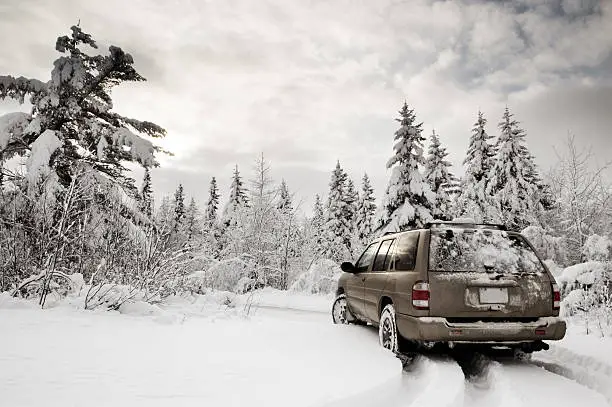

[…] the Perfect Ride: Best Small SUVs for Dogs in the USA Your Guide to Finding the Best SUV for Snow in the US Exploring the Top SUVs with the Most Legroom in the 3rd Row Can You Fit a Dishwasher in Your […]